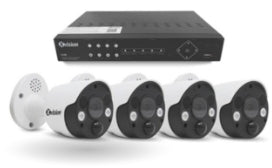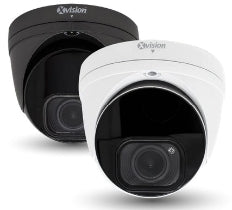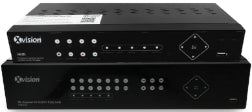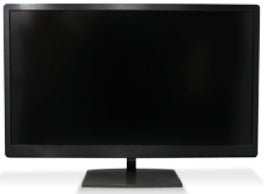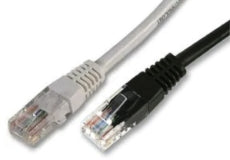
AI-Powered IP CCTV by Xvision®

About Xvision® AI CCTV
Xvision® AI CCTV is a leading smart surveillance system that's great for different settings, packed with features for homes, businesses, and more.
For homes, Xvision® AI CCTV cameras stop intruders, recognise faces, and even spot emotions. They also watch the boundaries of your property, alerting you if something's not right. In businesses, Xvision® AI CCTV tracks when staff come and go without punch cards or time and attendance equipment, just by scanning their faces. It also tells you how busy places are using AI crowd detection and heat mapping, and even keeps an eye on things that shouldn't move.
For an extra layer of security, the Xvision® AI-Powered Virtual Guard acts like your own personal security guard, distinguishing between people and cars, and counting them as they move around. This technology is brilliant for keeping all sorts of areas safe and well-monitored.










 Click on an icon below to see more info:
Click on an icon below to see more info:
(View, Record & Defend)

Xvision® Active Defence cameras do more than just passively record events. Unlike traditional CCTV cameras, Xvision® cameras are equipped with features that actively discourage intruders from entering a property. They come with AI detection capabilities that trigger various deterrent mechanisms, such as audio warnings, strobe lights, and sirens. The aim is not merely to capture footage of unauthorised activity, but to intervene in real-time, making the environment less appealing for intruders.
The applications of Xvision® Active Defence cameras are diverse and extend beyond residential security. They are also being used in commercial settings, such as retail stores, warehouses, and office buildings, where the risks of security breaches can be very serious. These cameras can be integrated into broader security systems, offering a multi-layered approach to safeguarding property. With remote control features, property owners or security personnel can activate deterrent features as needed, even when they are not on-site. This makes Xvision® Active Defence cameras a versatile and effective tool in modern security solutions.

Xvision® Time and Attendance is an advanced workforce management solution that uses facial recognition technology to automatically log employees’ arrival and departure times. Unlike traditional methods such as punch cards or manual sign-in sheets, this AI-driven system scans employees’ faces directly from the CCTV cameras to verify their identity and record their attendance. The system leverages artificial intelligence and machine learning algorithms to provide a fast and accurate way to track time and attendance. Importantly, the system functions autonomously, requiring no manual oversight or action from employees, thereby streamlining the attendance process and minimising human error.
This state-of-the-art system is versatile, finding applications across a variety of work environments. By automatically logging attendance through facial recognition technology, it not only offers an efficient and secure way to monitor employees’ working hours but also eliminates the need for manual intervention. This autonomous functionality aids businesses in managing staffing levels more effectively and calculating pay with higher accuracy. It also deters unethical practices like “buddy punching,” thus enhancing the integrity of attendance records. For larger organisations, the system proves invaluable in overseeing staff flow across multiple locations or departments without requiring human oversight. As a result, AI CCTV systems equipped with face recognition technology deliver a streamlined and efficient solution for contemporary workforce management.

Xvision® Crowd Density Detection cameras are with specialised software algorithms designed to monitor and analyse the density of crowds in a given area. Unlike standard CCTV cameras, these cameras can assess the number of people within a specific space and determine how closely packed they are. This is achieved through a combination of machine learning and computer vision to provide real-time data on crowd density. The primary goal is to offer insights into crowd behaviour and safety, allowing for immediate action if necessary.
The applications for Xvision® Crowd Density Detection cameras are extensive and particularly relevant in scenarios where crowd management and safety are of utmost importance. These cameras are commonly used in large public gatherings like concerts, sports events, and protests to monitor crowd size and movement. They can trigger alerts if a certain density threshold is exceeded, enabling quick response from security or emergency services. In transportation hubs such as airports and train stations, these cameras can help manage flow and prevent bottlenecks. They are also increasingly being used in smart city initiatives to monitor public spaces and improve urban planning. By providing real-time, actionable data, crowd density detection cameras serve as a critical tool for enhancing public safety and operational efficiency.

Xvision® Stationary Object Detection cameras have the ability to identify objects that remain still for an extended period within their field of view. Unlike traditional CCTV cameras, which continuously record activity, these specialized cameras use algorithms and machine learning to focus on objects that stay in one place for longer than a set time. When such an object is detected, the camera can trigger alerts or other security measures, providing a more targeted approach to monitoring.
These specialised Xvision® CCTV cameras have a broad range of uses across various sectors. In security contexts, they can alert personnel to unattended bags or vehicles that could pose a security risk. In retail settings, they can help identify merchandise that has been moved but not returned, potentially aiding in loss prevention. In transport hubs like airports or train stations, these cameras can flag unattended luggage or other items that could disrupt operations or pose safety hazards. They’re also useful in smart city projects for identifying illegally parked vehicles or obstructions in public spaces. By offering real-time, actionable data, CCTV cameras with stationary object detection capabilities are becoming an indispensable tool in modern security and operational applications.

Xvision® Number Plate Recognition, also known as License Plate Recognition, is a technology used to automatically identify and read the license plates of vehicles. This is achieved using Xvision® AI cameras with optical character recognition (OCR) software. These cameras capture images of vehicles’ license plates and then convert the alphanumeric characters into machine-readable text. Unlike standard CCTV cameras, which simply record footage, number plate recognition cameras can process and store this specific data for various applications, ranging from security to traffic management.
The uses for Xvision® number plate recognition technology are wide-ranging and varied. Commercial enterprises use it to control access to secure parking and loading areas. Some residential areas are also adopting it for added security, keeping track of who comes in and out. The system can send alerts via email and app notifications when it recognises license plates, and it can also trigger visible and audible alarms as well as voice prompts. Moreover, the system can activate alarm outputs to open doors and barriers, making it a multifunctional and efficient solution for a variety of sectors.

Xvision® Cross Counting cameras are equipped with intelligent software designed to count the number of people or objects crossing a predetermined line or zone within its field of view. Unlike standard CCTV cameras, cross counting cameras use advanced algorithms to accurately tally footfall, vehicle movement, or even wildlife activity. These cameras can distinguish between different types of movement and can filter out irrelevant activity, such as a passing bird or a swaying tree, to provide more accurate counts.
The applications for Xvision® Cross Counting cameras are varied and span multiple industries. In retail settings, these cameras can provide invaluable data on customer footfall, helping businesses to optimise staffing levels, layout, and promotional strategies. In transportation hubs like airports or train stations, they can monitor crowd density and flow, aiding in crowd management and safety protocols. They are also used in smart city initiatives to monitor vehicle traffic, helping to improve road conditions and manage congestion. In wildlife conservation, these cameras can be used to track the movement of animals in a given area, providing data that can be crucial for research and preservation efforts. Overall, cross counting cameras offer a versatile solution for gathering precise, actionable data.

Face Recognition Xvision® Face Recognition cameras are equipped with facial recognition technology. These cameras use advanced algorithms to scan, analyse, and match faces against a pre-existing database in real-time. Unlike standard CCTV cameras, which simply record footage for later review, face recognition cameras can identify individuals almost instantaneously as they come into view. This technology relies on unique facial features—such as the distance between the eyes or the shape of the nose—to create a facial signature that can be matched against stored data.
The applications for Xvision® Face Recognition cameras are extensive and cover a range of sectors. In security and law enforcement, these cameras are used for identifying suspects. In commercial settings, they can be used for access control, allowing only authorised personnel to enter specific areas or for instantly recognising banned customers or visitors, or for identifying VIP guests. Educational institutions may employ these cameras for attendance tracking or to enhance campus security. Alerts can be sent by email and app notification when faces are recognised, and visible and audible alarms and voice prompts can be triggered. Additionally alarm outputs can be triggered to open doors and barriers.
Xvision® Face Attributes cameras go beyond simple facial recognition. Equipped with advanced machine learning algorithms and computer vision technology, these cameras can analyse various attributes of a face, such as age, gender, emotion, and specific features like glasses or wearing a mask. Unlike standard CCTV cameras, face attributes cameras can provide a more nuanced understanding of the individuals within its field of view, offering not just identification but also categorisation based on multiple facial characteristics.
The applications for Xvision® Face Attributes cameras are diverse and span multiple sectors. In retail, these cameras can be used for targeted advertising by identifying the demographics of shoppers and adjusting digital signage accordingly. In security and law enforcement, they can assist in identifying suspects by narrowing down individuals based on specific facial attributes. In hospitality and entertainment venues, such as hotels or casinos, these cameras can enhance customer experience by identifying VIP guests and tailoring services to them. They are also used in research and healthcare settings to study emotional responses or to monitor patient conditions. With the capability to provide a deeper level of analysis, face attributes cameras are becoming an increasingly valuable tool in various industries.

Xvision® Face and Number Plate Recognition cameras can work in tandem with third-party access control devices, utilising Xvision®'s cutting-edge facial and number plate recognition technologies to provide a seamless and secure access control experience. Unlike conventional systems, Xvision® powered Access Control solutions rely on AI to analyse and verify identities or vehicle plates, triggering the appropriate access control mechanisms in real-time.
Xvision® Access Control's applications are extensive and adaptable to various environments. In commercial settings, it can be used to manage access to restricted areas, ensuring that only authorised personnel can enter. Retail businesses can integrate it for heightened security, controlling access based on facial recognition or vehicle details. Residential complexes can employ this technology for secure gate management, allowing entry to residents and verified visitors based on their facial features or vehicle number plates. The system's compatibility with other security systems, such as alarms and barriers, enhances its functionality. It can send alerts via email and app notifications upon recognition of registered faces or plates, and it can trigger connected third-party devices like doors, gates, or barriers. This ability to interface with a range of access control devices makes Xvision® Access Control a versatile and indispensable tool in modern security management, offering an added layer of protection and convenience in various sectors.

Xvision® Heat Map cameras not only capture video footage but also generate heat maps to represent areas of high and low activity within their field of view. Unlike standard CCTV cameras, which simply record what happens, these cameras use data analytics to create a visual overlay that shows where movement or activity is most concentrated. The heat map is colour-coded red, amber and green indicating varying levels of activity or occupancy.
Xvision® Heat Map cameras have a wide range of applications, particularly in commercial and retail settings. These cameras can provide invaluable insights into customer behaviour, such as which areas of a store are most visited or which products attract the most attention. This data can help retailers optimise store layout, product placement, and staffing. In office buildings, heat maps can be used to monitor the usage of communal spaces like meeting rooms or break areas, aiding in more efficient facility management. They are also useful in public spaces like airports or train stations for crowd management and safety monitoring. By providing a visual representation of activity hotspots, CCTV cameras with heat map functionality offer a powerful tool for data-driven decision-making.

An Xvision® Queue Length Detection camera is an advanced surveillance system that has the capability to monitor and measure the length of queues in various settings. Unlike traditional CCTV cameras that simply record video footage, this specialised camera uses computer vision algorithms to accurately count the number of people or vehicles in a line. It provides real-time data on queue lengths, waiting times, and even the rate at which the queue is moving, allowing for more effective management of queues and improved operational efficiency.
Xvision® CCTV cameras equipped with queue length detection have a broad range of applications across multiple sectors. In retail, this technology can help store managers allocate staff more effectively, thereby reducing customer wait times and enhancing the overall shopping experience. In transportation hubs like airports and train stations, these cameras can be used to manage crowd flow and allocate resources more efficiently. Event venues can employ this technology to manage entry points and concessions, improving both attendee experience and safety. In healthcare settings, such as hospitals and clinics, queue length detection can help manage patient flow and reduce waiting times. By offering real-time, actionable data, CCTV cameras with queue length detection serve as a valuable tool for enhancing service quality and operational efficiency.












 Click on an icon below to see more info:
Click on an icon below to see more info:
(View, Record & Defend)

Xvision® Active Defence cameras do more than just passively record events. Unlike traditional CCTV cameras, Xvision® cameras are equipped with features that actively discourage intruders from entering a property. They come with AI detection capabilities that trigger various deterrent mechanisms, such as audio warnings, strobe lights, and sirens. The aim is not merely to capture footage of unauthorised activity, but to intervene in real-time, making the environment less appealing for intruders.
The applications of Xvision® Active Defence cameras are diverse and extend beyond residential security. They are also being used in commercial settings, such as retail stores, warehouses, and office buildings, where the risks of security breaches can be very serious. These cameras can be integrated into broader security systems, offering a multi-layered approach to safeguarding property. With remote control features, property owners or security personnel can activate deterrent features as needed, even when they are not on-site. This makes Xvision® Active Defence cameras a versatile and effective tool in modern security solutions.

Xvision® Line Crossing Detection cameras allow for the setting of virtual boundaries or “lines” within the camera’s field of view. When these lines are crossed by people, vehicles, or other objects, the camera can trigger various actions such as sending alerts, capturing images, or starting video recording. This technology relies on computer vision algorithms to accurately detect movement across the predetermined lines. Unlike standard CCTV cameras, which continuously record footage, cameras with line crossing detection offer a more focused approach to monitoring specific areas.
The applications for Xvision® Line Crossing Detection cameras are numerous and versatile. In security settings, these cameras can be used to monitor the perimeter of a property, sending alerts when an unauthorised individual or vehicle crosses the boundary. In retail environments, line crossing detection can help manage queues or monitor restricted areas like stock rooms. In industrial settings, these cameras can be used to ensure safety protocols are followed, such as keeping personnel away from hazardous areas. They are also used in traffic management to detect illegal turns or crossings at intersections. In wildlife monitoring, line crossing detection can alert researchers when animals enter or leave a specific area. Overall, the technology offers a targeted approach to surveillance, making it a valuable tool in a wide range of applications.

Xvision® Human and Vehicle Detection cameras are advanced CCTV cameras equipped with intelligent algorithms that can distinguish between humans and vehicles within their field of view. Unlike traditional CCTV cameras, which simply record all activity, these specialised cameras can identify and track both people and vehicles, triggering specific actions or alerts based on what they detect. This adds a layer of intelligence to CCTV, allowing for more targeted monitoring and quicker response times.
Xvision® Human and Vehicle Detection cameras have a wide range of applications across multiple sectors. In residential and commercial security, these cameras can send alerts or activate deterrents when an unauthorised person or vehicle enters a restricted area. In retail environments, they can help manage parking spaces and monitor customer footfall. For law enforcement and border control, these cameras can be invaluable for identifying suspicious activities or tracking the movement of vehicles. They are also increasingly being used in smart city initiatives to manage traffic flow, reduce congestion, and improve road safety. By providing real-time, actionable data, CCTV cameras with human and vehicle detection capabilities are becoming an essential tool in modern security and surveillance applications.

Xvision® Crowd Density Detection cameras are with specialised software algorithms designed to monitor and analyse the density of crowds in a given area. Unlike standard CCTV cameras, these cameras can assess the number of people within a specific space and determine how closely packed they are. This is achieved through a combination of machine learning and computer vision to provide real-time data on crowd density. The primary goal is to offer insights into crowd behaviour and safety, allowing for immediate action if necessary.
The applications for Xvision® Crowd Density Detection cameras are extensive and particularly relevant in scenarios where crowd management and safety are of utmost importance. These cameras are commonly used in large public gatherings like concerts, sports events, and protests to monitor crowd size and movement. They can trigger alerts if a certain density threshold is exceeded, enabling quick response from security or emergency services. In transportation hubs such as airports and train stations, these cameras can help manage flow and prevent bottlenecks. They are also increasingly being used in smart city initiatives to monitor public spaces and improve urban planning. By providing real-time, actionable data, crowd density detection cameras serve as a critical tool for enhancing public safety and operational efficiency.

Xvision® Face Recognition cameras are equipped with facial recognition technology. These cameras use advanced algorithms to scan, analyse, and match faces against a pre-existing database in real-time. Unlike standard CCTV cameras, which simply record footage for later review, face recognition cameras can identify individuals almost instantaneously as they come into view. This technology relies on unique facial features—such as the distance between the eyes or the shape of the nose—to create a facial signature that can be matched against stored data.
The applications for Xvision® Face Recognition cameras are extensive and cover a range of sectors. In security and law enforcement, these cameras are used for identifying suspects. In commercial settings, they can be used for access control, allowing only authorised personnel to enter specific areas or for instantly recognising banned customers or visitors, or for identifying VIP guests. Educational institutions may employ these cameras for attendance tracking or to enhance campus security. Alerts can be sent by email and app notification when faces are recognised, and visible and audible alarms and voice prompts can be triggered. Additionally alarm outputs can be triggered to open doors and barriers.

Xvision® Number Plate Recognition, also known as License Plate Recognition, is a technology used to automatically identify and read the license plates of vehicles. This is achieved using Xvision® AI cameras with optical character recognition (OCR) software. These cameras capture images of vehicles’ license plates and then convert the alphanumeric characters into machine-readable text. Unlike standard CCTV cameras, which simply record footage, number plate recognition cameras can process and store this specific data for various applications, ranging from security to traffic management.
The uses for Xvision® number plate recognition technology are wide-ranging and varied. Commercial enterprises use it to control access to secure parking and loading areas. Some residential areas are also adopting it for added security, keeping track of who comes in and out. The system can send alerts via email and app notifications when it recognises license plates, and it can also trigger visible and audible alarms as well as voice prompts. Moreover, the system can activate alarm outputs to open doors and barriers, making it a multifunctional and efficient solution for a variety of sectors.

Xvision® Face Recognition cameras are equipped with facial recognition technology. These cameras use advanced algorithms to scan, analyse, and match faces against a pre-existing database in real-time. Unlike standard CCTV cameras, which simply record footage for later review, face recognition cameras can identify individuals almost instantaneously as they come into view. This technology relies on unique facial features—such as the distance between the eyes or the shape of the nose—to create a facial signature that can be matched against stored data.
The applications for Xvision® Face Recognition cameras are extensive and cover a range of sectors. In security and law enforcement, these cameras are used for identifying suspects. In commercial settings, they can be used for access control, allowing only authorised personnel to enter specific areas or for instantly recognising banned customers or visitors, or for identifying VIP guests. Educational institutions may employ these cameras for attendance tracking or to enhance campus security. Alerts can be sent by email and app notification when faces are recognised, and visible and audible alarms and voice prompts can be triggered. Additionally alarm outputs can be triggered to open doors and barriers.

Xvision® Face and Number Plate Recognition cameras can work in tandem with third-party access control devices, utilising Xvision®'s cutting-edge facial and number plate recognition technologies to provide a seamless and secure access control experience. Unlike conventional systems, Xvision® powered Access Control solutions rely on AI to analyse and verify identities or vehicle plates, triggering the appropriate access control mechanisms in real-time.
Xvision® Access Control's applications are extensive and adaptable to various environments. In commercial settings, it can be used to manage access to restricted areas, ensuring that only authorised personnel can enter. Retail businesses can integrate it for heightened security, controlling access based on facial recognition or vehicle details. Residential complexes can employ this technology for secure gate management, allowing entry to residents and verified visitors based on their facial features or vehicle number plates. The system's compatibility with other security systems, such as alarms and barriers, enhances its functionality. It can send alerts via email and app notifications upon recognition of registered faces or plates, and it can trigger connected third-party devices like doors, gates, or barriers. This ability to interface with a range of access control devices makes Xvision® Access Control a versatile and indispensable tool in modern security management, offering an added layer of protection and convenience in various sectors.

Loud sound detection allows for the identification of unusually loud noises within a monitored environment. These cameras use specialised microphones and sound analysis algorithms to detect sounds that exceed a certain decibel level, such as breaking glass, gunshots, or shouting. Unlike traditional audio monitoring systems, which continuously record ambient noise, loud sound detection systems are designed to trigger alerts or other actions when a significant noise event occurs. This enables a more proactive approach to security and safety monitoring.
The applications for loud sound detection are varied and span multiple sectors. In residential and commercial security, these systems can alert property owners or security personnel to potential break-ins or other emergencies, enabling a quicker response. In urban environments, loud sound detection can be integrated into smart city initiatives to monitor noise pollution or to quickly identify and respond to incidents like car accidents or public disturbances. Schools and educational institutions may use these systems to enhance campus safety by detecting unusual sounds that could indicate a problem. In industrial settings, loud sound detection can serve as an early warning system for equipment malfunctions or other issues that could pose safety risks. Overall, loud sound detection offers a valuable tool for enhancing situational awareness and improving response times in various applications.






 Click on an icon below to see more info:
Click on an icon below to see more info:
(View, Record & Defend)

Xvision® Active Defence cameras do more than just passively record events. Unlike traditional CCTV cameras, Xvision® cameras are equipped with features that actively discourage intruders from entering a property. They come with AI detection capabilities that trigger various deterrent mechanisms, such as audio warnings, strobe lights, and sirens. The aim is not merely to capture footage of unauthorised activity, but to intervene in real-time, making the environment less appealing for intruders.
The applications of Xvision® Active Defence cameras are diverse and extend beyond residential security. They are also being used in commercial settings, such as retail stores, warehouses, and office buildings, where the risks of security breaches can be very serious. These cameras can be integrated into broader security systems, offering a multi-layered approach to safeguarding property. With remote control features, property owners or security personnel can activate deterrent features as needed, even when they are not on-site. This makes Xvision® Active Defence cameras a versatile and effective tool in modern security solutions.

An Xvision® AI CCTV camera with Perimeter Detection is designed to monitor and secure the boundaries of a property or designated area. Unlike traditional CCTV cameras that focus on general monitoring, this advanced camera is equipped with features that alert when an object or individual crosses a predefined boundary.
Xvision® Perimeter Detection cameras have a wide range of applications, particularly in environments where boundary security is crucial. In industrial settings like power plants or chemical factories, these cameras can help prevent unauthorised access and potential sabotage. Military bases and government facilities often use advanced perimeter detection technologies for enhanced security. Airports, seaports, and other transportation hubs employ these systems to secure restricted areas and manage crowd flow. In residential settings, perimeter detection can add an extra layer of security by alerting homeowners to any potential intruders. These cameras are also increasingly being used in wildlife reserves to monitor animal movement and prevent poaching. By offering focused and real-time security measures, CCTV cameras with perimeter detection are becoming a critical component in modern security solutions.

Xvision® Human and Vehicle Detection cameras are advanced CCTV cameras equipped with intelligent algorithms that can distinguish between humans and vehicles within their field of view. Unlike traditional CCTV cameras, which simply record all activity, these specialised cameras can identify and track both people and vehicles, triggering specific actions or alerts based on what they detect. This adds a layer of intelligence to CCTV, allowing for more targeted monitoring and quicker response times.
Xvision® Human and Vehicle Detection cameras have a wide range of applications across multiple sectors. In residential and commercial security, these cameras can send alerts or activate deterrents when an unauthorised person or vehicle enters a restricted area. In retail environments, they can help manage parking spaces and monitor customer footfall. For law enforcement and border control, these cameras can be invaluable for identifying suspicious activities or tracking the movement of vehicles. They are also increasingly being used in smart city initiatives to manage traffic flow, reduce congestion, and improve road safety. By providing real-time, actionable data, CCTV cameras with human and vehicle detection capabilities are becoming an essential tool in modern security and surveillance applications.


